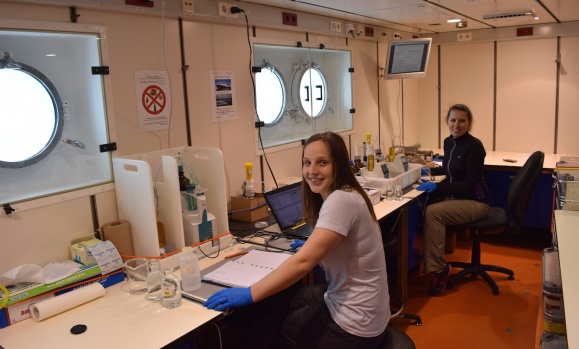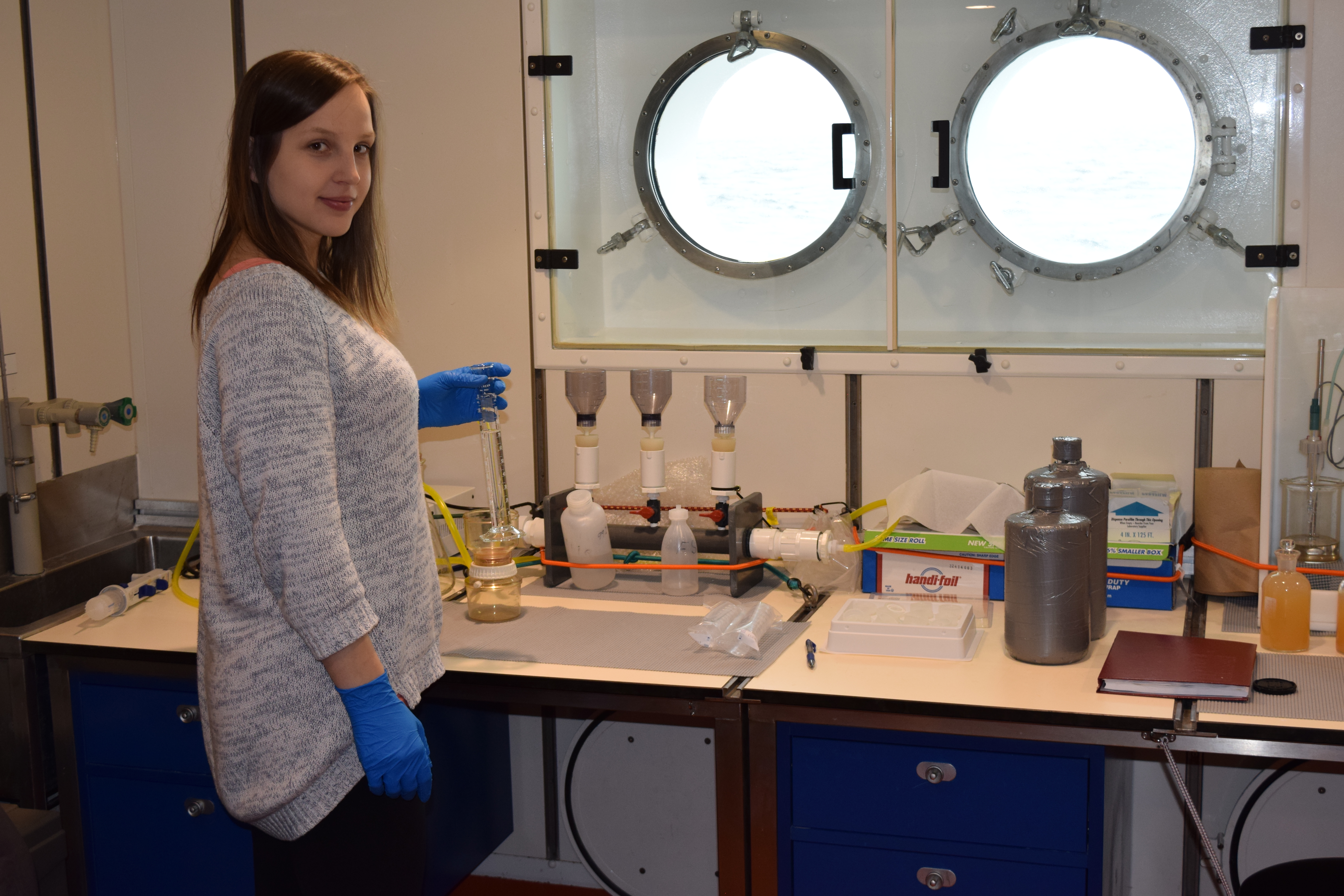News
» Go to news mainA Focus on Quality Control on the SeaCycler Mooring

This doesn’t sound new: "having bad data is worse than having no data!" Anyone who has had to deal with ‘fishy’ numbers coming out from an instrument will agree.
A strong motivation is driving Dalhousie's CERC.OCEAN team of scientists to work around the clock collecting and processing water samples in order to produce Quality Controlled (QC) data fror oxygen sensors on the CTD rosette, SeaCycler, a surface-profiling mooring, and a number of other moorings. The sensor float of SeaCycler itself is populated with 13 (!) different sensors, which require in situ calibration. While some water samples can be processed straightaway in the chemistry lab onboard, the rest will be sent home and analyzed at Dalhousie University in Halifax, NS, Canada.
So what’s happening in the lab?
GEOMAR and the CERC.OCEAN group at Dalhousie provided two titration systems for the analysis of oxygen samples onboard the R/V Maria S. Merian. The chemistry behind the method was described by Winkler back in 1888 and with certain modifications it has remained a gold standard for oxygen measurements for more than a century now. However, these two systems utilize their own detection method (voltammetry vs. colorimetry), sample volume and concentration of reagents. Despite all the differences, an agreement in oxygen values between the two systems is impeccable. The results are truly encouraging for both GEOMAR and Dalhousie teams who rely on their systems in the assessment of instruments’ performance.
Chlorophyll and CDOM (Coloured Dissolved Organic Matter) samples are partly processed onboard and preserved for later analysis. The same goes for nutrient measurements, which are frozen to ensure these samples are preserved, and the carbonate system probes.
Kat Fupsova with a filtering station for Chlorophyll, CDOM, and nutrients. getting ready for the next batch of samples.
Once the chemists have done their job, it’s up to the deployed instruments to show what is hidden in the blue and cold waters of the Labrador Sea. It's really a team effort to ensure we are getting the best, more accurate data! See our dedicated SeaCycler Page for more information about the SeaCycler mooring, in addition to photos, videos, and news articles.
Recent News
- Recap of ASITA 2024 Conference
- ASITA 2024 Conference
- Happy World Ocean Day! + CMOS congress 2023 recap
- Upcoming presentations by CERC.OCEAN lab at the CMOS 57th congress
- UPDATED: List of Instrumentation and Analytical Services
- Field Report: Exploratory Study of nitrogen cycling at the Lagoon Lagos
- Marine Robots – Back in Action at OHMSETT
- Spotlight of the month: Adriana Reitano


